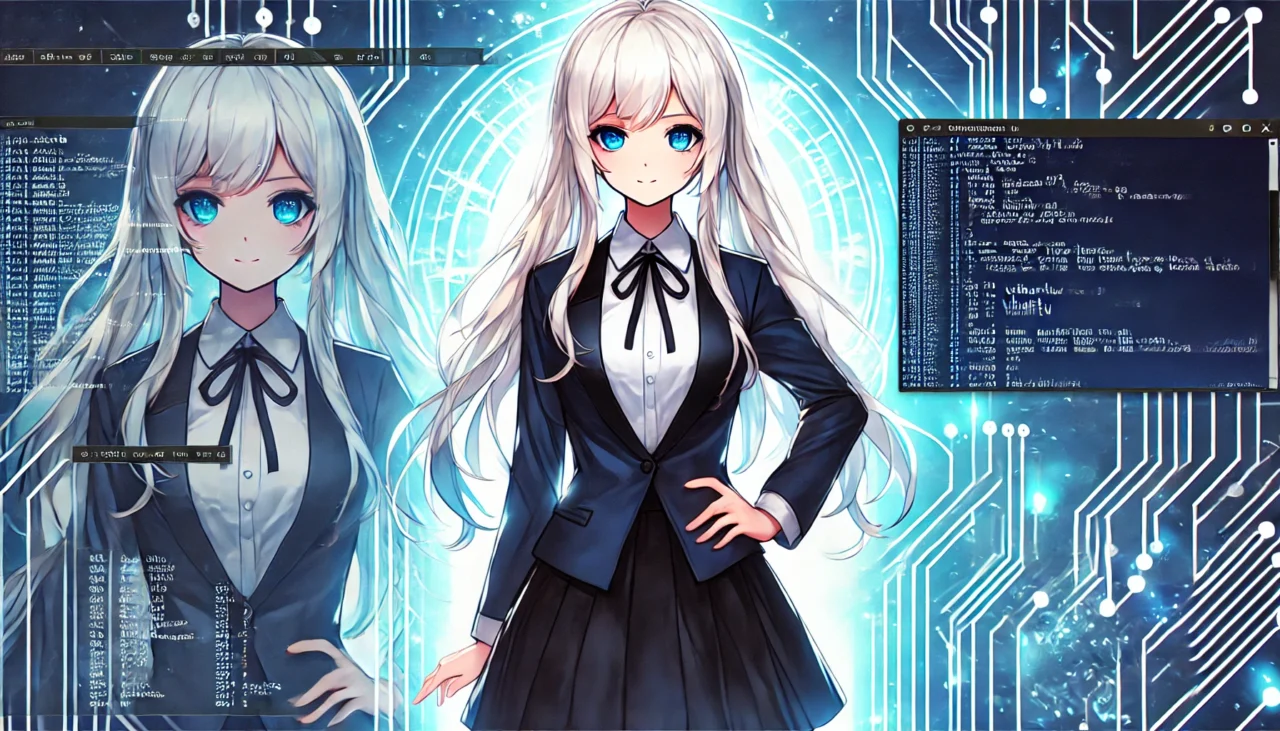1. Introduction
The issue of the terminal not launching in Ubuntu can be a major obstacle for Linux beginners. Since the terminal is an essential tool for system management and operation, resolving this issue is very important. This article provides a clear explanation of how to identify the causes and effective solutions to this problem.
First, here are some simple solutions that you can try immediately:
- Use an alternative terminal: Try installing and using
xtermorgnome-terminal. - Restart the system: A simple system reboot may resolve temporary issues.
- Check locale settings: If there is an issue with your locale settings, they may need to be fixed.
Try these methods one by one to troubleshoot the problem.
2. Identifying the Cause
When the terminal fails to launch in Ubuntu, identifying the cause is crucial. Below, we introduce common causes and how to check for them.
Check for Error Messages
When the terminal does not start, an error message may appear. Checking this message can help you identify the cause more easily.
- Use a virtual console: Open a virtual console with
Ctrl + Alt + F3, log in, and check for error messages when trying to launch the terminal.
Check Log Files
You can check Ubuntu’s system logs to get more details about the error. Look at the following files:
~/.xsession-errors: Contains errors related to the GUI./var/log/syslog: Logs errors across the entire system.
Example command:
cat ~/.xsession-errors | tail -n 20Check System Status
Insufficient disk space or pending updates could be the cause.
- Check disk space:
df -h- Check for pending updates:
sudo apt updateIf the cause is identified, proceed to the next steps.
3. General Solutions
Below are common solutions to fix the issue of the terminal not launching in Ubuntu.
Step 1: Try an Alternative Terminal
If the terminal won’t open, trying a different terminal might help.
- Install xterm:
sudo apt install xterm- Launch xterm and run troubleshooting commands.
Step 2: Fix Locale Settings
If the locale settings are incorrect, the terminal may not function properly.
- Check locale settings:
cat /etc/default/locale- If necessary, edit the file:
sudo nano /etc/default/localeExample of a correct setting:
LANG="en_US.UTF-8"
LANGUAGE="en_US:en"Step 3: Reset User Configuration Files
Incorrect configurations in .bashrc or .profile can prevent the terminal from launching.
- Reset configuration files:
mv ~/.bashrc ~/.bashrc.backup
cp /etc/skel/.bashrc ~/Step 4: Repair the System
If the issue is due to system problems, repairing packages may resolve it.
- Example command:
sudo apt update && sudo apt upgradeStep 5: Free Up Disk Space
If disk space is full, deleting unnecessary files might solve the issue.
- Remove unused packages:
sudo apt autoremove4. Case Studies
Here, we will go over specific cases where the terminal does not launch in Ubuntu and explain the solutions in detail.
Case 1: Locale Setting Issues
Symptoms:
When trying to open the terminal, an error message like the following may appear:
locale: Cannot set LC_ALL to default locale: No such file or directoryCause:
This happens when the locale settings are not properly configured.
Solution:
- Check current locale settings
Run the following command to check the current locale settings.
localeIf an error message appears, there is an issue with the configuration.
- Regenerate locale settings
Run the following commands to regenerate locale settings.
sudo locale-gen en_US.UTF-8
sudo dpkg-reconfigure locales- Edit the locale file
Check and modify the/etc/default/localefile if necessary.
sudo nano /etc/default/localeExample of correct settings:
LANG="en_US.UTF-8"
LANGUAGE="en_US:en"- Restart the system
Reboot the system to apply the changes.
sudo rebootCase 2: Incorrect User Configuration Files
Symptoms:
When launching the terminal, the window briefly opens and immediately closes.
Cause:
Errors in .bashrc or .profile may prevent the terminal from running.
Solution:
- Check for issues
Use a virtual console (Ctrl + Alt + F3) to log in and inspect the configuration files.
nano ~/.bashrc- Backup and reset configuration files
Move the existing file and restore the default settings.
mv ~/.bashrc ~/.bashrc.backup
cp /etc/skel/.bashrc ~/- Restart the terminal
Restart the terminal to apply the changes.
Case 3: Issues After System Updates
Symptoms:
After an Ubuntu system update, the terminal no longer launches.
Cause:
Some necessary packages may not have been installed properly during the update.
Solution:
- Repair the system
Run the following command to fix broken packages.
sudo apt --fix-broken install- Reinstall the terminal emulator
If necessary, reinstall the terminal emulator.
sudo apt remove gnome-terminal
sudo apt install gnome-terminal5. FAQ (Frequently Asked Questions)
This section provides answers to common questions about the terminal not launching in Ubuntu. It supplements the information in this article and helps troubleshoot further issues.
Q1: What should I do if the terminal does not respond at all?
A1:
If the terminal is completely unresponsive, try the following steps:
- Use a virtual console
PressCtrl + Alt + F3to open a virtual console, log in, and investigate the issue.
Try running the following commands:
sudo apt update
sudo apt upgrade- Install an alternative terminal
Use the virtual console to installxtermor another terminal emulator.
sudo apt install xtermQ2: Fixing the locale settings did not solve the problem. What should I do next?
A2:
If adjusting the locale settings does not work, try these steps:
- Check system language settings
For GNOME users, go toSettings > Region & Languageand review the system-wide language settings. - Regenerate all locales
sudo locale-gen --purge
sudo dpkg-reconfigure locales- Temporarily set environment variables
Try setting them manually in the virtual console:
export LANG=en_US.UTF-8
export LC_ALL=en_US.UTF-8Q3: What if no terminal works at all?
A3:
If all terminal applications fail, try these steps:
- Use recovery mode
During boot, access the GRUB menu, select “Recovery Mode,” and use the “Root Shell” to perform repairs.
sudo dpkg --configure -a- Reinstall the display manager
A broken display manager may be causing the issue.
sudo apt install --reinstall gdm36. Conclusion
The issue of the terminal not launching in Ubuntu can be frustrating for beginners and intermediate users. However, in most cases, it can be resolved by following the correct steps. This article has provided solutions based on the following steps:
Key Takeaways
- Identify the cause
- Use virtual consoles and log files to diagnose the problem.
- Check common causes like disk space or locale settings.
- General troubleshooting steps
- Try alternative terminals, adjust locale settings, or reset user configuration files.
- Specific case studies
- Solutions for locale issues, configuration file errors, and update-related problems.
- FAQ section
- Answers to common user questions with practical troubleshooting steps.
Next Steps
Once your terminal is working again, consider these best practices:
- Backup important settings
Save important configuration files to restore them if needed.
cp ~/.bashrc ~/.bashrc.backup- Perform regular maintenance
Keep your system stable with updates and cleanups.
sudo apt update && sudo apt upgrade
sudo apt autoremove


![How to Safely Change Your Username in Ubuntu [Complete Beginner’s Guide]](https://www.linux.digibeatrix.com/wp-content/themes/the-thor/img/dummy.gif)